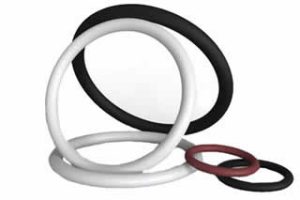
Polytetrafluoroethylene (PTFE) is commonly used in the construction of seals. Many O-rings, for instance, are entirely of PTFE. You can place them around the mating surfaces to prevent leaks. Even when exposed to pressurized fluid or gas, they will continue to seal the mating surfaces without leaking. Here are some of the top benefits of PTFE seals that you should know.
Heat Resistant
PTFE seals are heat resistant. They can withstand more heat, in fact, than seals made of other materials. With its synthetic fluoropolymer composition, some types of PTFE can withstand temperatures of up to 350 degrees Fahrenheit.
Exposure to hot temperatures such as this won’t jeopardize their integrity. PTFE seals are heat resistant. They’ll expand, in fact, when exposed to heat. This thermal expansion will result in an even higher level of protection against leaks.
Low Friction
You don’t have to worry about PTFE seals causing friction-related damage the parts with which they are used. Of all the different materials in which seals are made, PTFE offers the lowest friction. Why does this matter exactly?
Friction will occur when two or more objects touch each other. Seals, of course, are placed around mating surfaces, and friction will occur in these areas. But PTFE seals offer the lowest friction of all types of seals, so they won’t damage or degrade the parts with which they are used.
Supports Complex Shapes
Not all PTFE seals consist of traditional O-rings. You can find them in other, more complex shapes. This is because PTFE supports compression molding. Compression molding is a molding process in which raw material is placed inside of a mold. The mold is then pressurized and heated, allowing the raw material to take the shape of the mold cavity.
In addition to compression molding, PTFE seals can be produced using resin. Regardless, you can find them in a variety of shapes and sizes.
Filled PTFE
While some seals are made entirely of PTFE, others are filled with other materials. Known as filled PTFE seals, they feature different properties than their all-PTFE counterparts.
There are moly-filled PTFE seals, for instance, that offer an even greater level of heat resistance. There are also graphite-filled PTFE seals. Graphite-filled PTFE seals are typically used for liquids and steams at moderate pressure. You can even find PTFE seals filled with glass. Glass-filled PTFE seals are designed for use in high-pressure sealing applications. Some glass-filled PTFE seals can withstand up to 40,000 pounds per square inch (PSI) of pressure.
